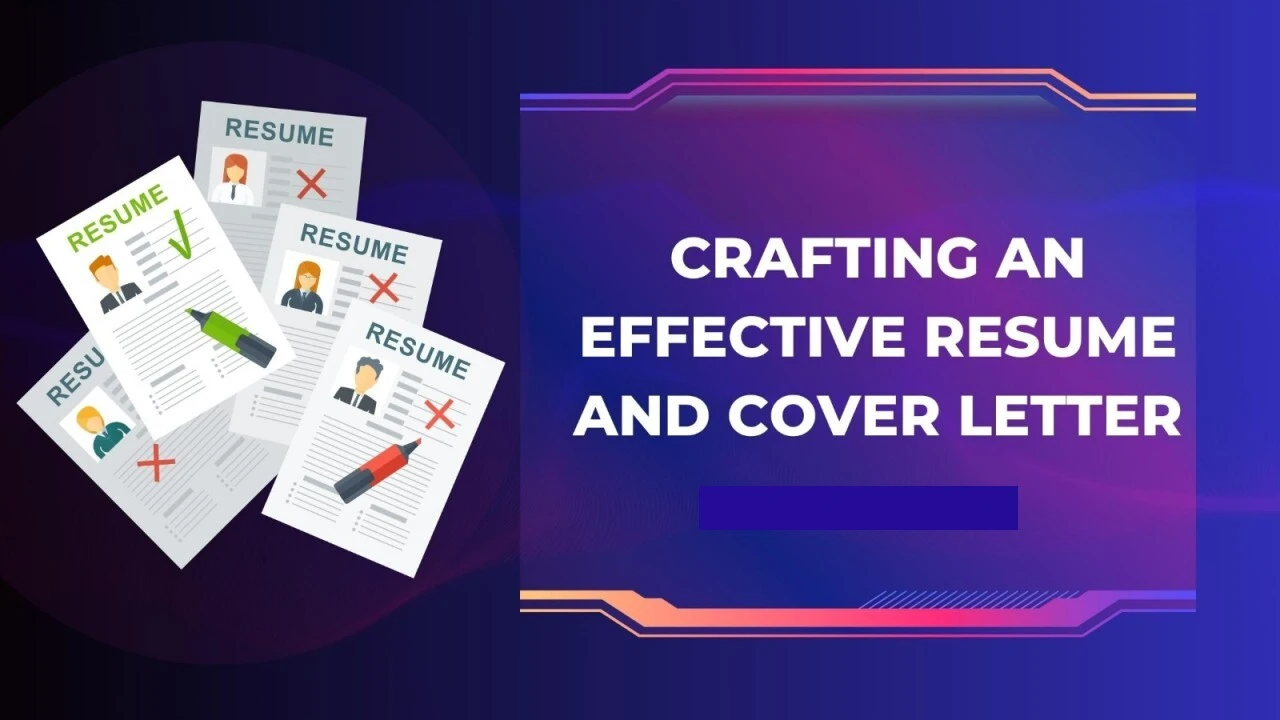Blog Detail

Common ATS Resume Mistakes and How to Avoid Them
Sep 22, 2025
Common ATS Resume Mistakes and How to Avoid Them
In today's competitive job market, crafting a resume that passes through Applicant Tracking Systems (ATS) is crucial. ATS software helps employers manage and filter applications, but it can also inadvertently screen out qualified candidates due to common resume mistakes. Understanding these pitfalls and knowing how to avoid them can significantly increase your chances of landing an interview. This guide explores common ATS resume mistakes and provides actionable tips to help you create an ATS-friendly resume. Plus, discover how Resumewritingservices.in can assist you with professional ATS resume writing services in India.
What is an Applicant Tracking System (ATS)?
Before diving into the mistakes, it's essential to understand what an ATS is and how it functions. An Applicant Tracking System is a software application used by recruiters and employers to manage the recruitment process. ATS software scans and parses resumes to determine if they match the job requirements. It then ranks candidates based on the relevance of their resumes to the job description.
Key Functions of ATS:
- Keyword Matching: ATS looks for specific keywords related to job skills and experience.
- Parsing: It extracts and organizes information from resumes into a structured format.
- Filtering: ATS filters out resumes that don’t meet the job criteria or contain formatting issues.
Understanding how ATS works can help you tailor your resume to pass through these systems effectively.
Common ATS Resume Mistakes
1. Keyword Stuffing
What It Is: Keyword stuffing involves overloading your resume with industry-specific terms or job-related keywords in an attempt to trick the ATS into ranking your resume higher. While using relevant keywords is crucial, excessive repetition can make your resume appear unnatural.
Why It’s a Problem:
- ATS Penalty: ATS algorithms are designed to detect keyword stuffing and may penalize your resume by ranking it lower.
- Readability Issues: Overuse of keywords can make your resume difficult to read for human recruiters.
How to Avoid It:
- Use Keywords Strategically: Incorporate keywords naturally throughout your resume, including in the summary, experience, and skills sections.
- Match Job Descriptions: Tailor your resume for each job application by aligning keywords with the job description. This approach helps ensure that your resume is relevant without being excessive.
Example: Instead of repeating "Project Management" throughout your resume, use variations like “Project Lead,” “Project Coordinator,” or “Project Oversight” in contextually appropriate sections.
2. Using Complex Formatting
What It Is: Complex formatting includes the use of unusual fonts, graphics, tables, and other design elements that can confuse ATS software. While these elements can make your resume visually appealing, they can hinder ATS readability.
Why It’s a Problem:
- ATS Parsing Issues: Complex formatting can cause ATS to misinterpret or ignore sections of your resume, leading to important information being missed.
- Inconsistent Results: The way your resume appears on ATS may differ from how it is viewed by humans, leading to potential misalignment in communication.
How to Avoid It:
- Stick to Simple Formatting: Use standard fonts like Arial, Times New Roman, or Calibri. Avoid using tables, text boxes, or graphics.
- Use Clear Headings: Use conventional headings such as “Experience,” “Skills,” and “Education” to make it easier for ATS to parse your resume.
Example: Instead of using text boxes for job titles, use bold text and straightforward formatting to highlight your roles and achievements.
3. Inconsistent Terminology
What It Is: Inconsistent terminology involves using different terms or abbreviations for the same skills or job titles throughout your resume. For example, using “Software Engineer” in one section and “Programmer” in another.
Why It’s a Problem:
- ATS Confusion: ATS may not recognize synonyms or variations as matching terms, potentially leading to your resume being overlooked.
- Lack of Clarity: Inconsistent terminology can make your qualifications appear unclear or unstructured.
How to Avoid It:
- Be Consistent: Use the same terminology and phrasing throughout your resume. If a job description uses “Digital Marketing Specialist,” ensure that’s the term you use consistently.
- Refer to Job Descriptions: Align your resume terminology with the language used in the job description to improve keyword matching.
Example: If a job description emphasizes “Customer Service Representative,” use this exact term rather than varying it with “Client Service Agent” in your resume.
4. Overlooking Important Sections
What It Is: Overlooking important sections means failing to include or underrepresenting critical parts of your resume, such as work experience, skills, or education.
Why It’s a Problem:
- ATS Filtering: Missing sections can lead to an incomplete resume being assessed by the ATS, resulting in lower rankings.
- Human Review: Incomplete sections can affect how human recruiters perceive your qualifications and experience.
How to Avoid It:
- Include All Relevant Sections: Ensure that your resume includes all key sections such as Contact Information, Experience, Skills, and Education.
- Provide Detailed Information: Clearly detail your responsibilities, achievements, and qualifications in each section.
Example: Ensure your “Experience” section includes all relevant job roles, with detailed descriptions of your responsibilities and accomplishments for each position.
5. Using Non-Standard Job Titles
What It Is: Using non-standard job titles refers to creating unique or unconventional titles that may not be recognized by ATS software. For example, using “Sales Ninja” instead of “Sales Representative.”
Why It’s a Problem:
- ATS Misinterpretation: ATS may not recognize or properly parse non-standard job titles, leading to your resume being undervalued.
- Lack of Relevance: Unconventional titles may not align with common industry terms, reducing your resume’s relevance to job seekers.
How to Avoid It:
- Use Standard Titles: Stick to commonly recognized job titles and industry-standard terms to ensure your resume is properly assessed.
- Describe Unique Roles Clearly: If you have a unique role, describe it in conventional terms while adding details in the job description.
Example: Instead of “Innovation Guru,” use “Innovation Manager” and provide details on your responsibilities and achievements.
6. Ignoring Keywords in Job Descriptions
What It Is: Ignoring keywords in job descriptions means failing to incorporate specific terms or phrases from the job posting into your resume.
Why It’s a Problem:
- ATS Discrepancy: ATS looks for keywords from the job description to match candidates with job requirements. Ignoring these keywords can result in your resume being overlooked.
- Missed Opportunities: Not aligning your resume with job descriptions may lead to missed job opportunities that are a good fit for your skills.
How to Avoid It:
- Analyze Job Descriptions: Carefully read job postings and identify key terms and phrases.
- Incorporate Keywords: Integrate these keywords naturally into your resume, ensuring that they reflect your experience and skills.
Example: If a job posting emphasizes “Technical Project Management,” make sure this term is included in your resume where relevant, such as in your skills and experience sections.
7. Lack of Specificity
What It Is: Lack of specificity involves providing vague or generalized information rather than detailed and quantifiable achievements.
Why It’s a Problem:
- ATS Evaluation: ATS systems look for specific terms and measurable outcomes. Vague descriptions can result in lower rankings.
- Impact on Recruiters: Generalized information can make it harder for recruiters to assess your suitability for the role.
How to Avoid It:
- Be Specific: Use precise language and quantify your achievements with metrics and details.
- Highlight Results: Focus on outcomes and results in your experience section to demonstrate your impact.
Example: Instead of stating “Managed a team,” say “Managed a team of 10 employees, leading to a 20% increase in project efficiency.”
8. Overloading with Irrelevant Information
What It Is: Overloading with irrelevant information means including details that are not pertinent to the job you are applying for, such as outdated skills or unrelated work experience.
Why It’s a Problem:
- ATS Filtering: ATS may prioritize relevant information and overlook or misinterpret irrelevant details.
- Cluttered Resume: Irrelevant information can clutter your resume, making it harder for recruiters to focus on your key qualifications.
How to Avoid It:
- Focus on Relevance: Tailor your resume to each job application by including only information relevant to the role.
- Prioritize Key Details: Highlight your most significant accomplishments and skills that align with the job description.
Example: If applying for a marketing role, emphasize your marketing skills and achievements rather than unrelated experience in fields like retail or hospitality.
How Resumewritingservices.in Can Help
Crafting an ATS-friendly resume can be challenging, especially when trying to avoid common mistakes. That’s where Resumewritingservices.in comes in. As leading ATS resume writing services in India, they offer professional assistance to ensure your resume is optimized for ATS and tailored to stand out to recruiters.
Benefits of Using Resumewritingservices.in:
- Expertise: Their team of professional resume writers has extensive experience in creating ATS-compliant resumes that align with industry standards.
- Customized Resumes: They tailor each resume to specific job descriptions, ensuring that your resume is keyword-optimized and highlights your most relevant skills and achievements.
- ATS Testing: They use advanced tools to test your resume against various ATS systems, ensuring that it passes through smoothly.
- Professional Formatting: They provide clean, professional formatting that enhances readability and aligns with ATS requirements.
By utilizing the services of Resumewritingservices.in, you can avoid common ATS resume mistakes and enhance your chances of landing interviews.
Final Thoughts
Avoiding common ATS resume mistakes is essential for ensuring that your resume gets noticed in today’s competitive job market. By focusing on keyword optimization, maintaining simple formatting, using consistent terminology, and avoiding irrelevant information, you can create a resume that passes through ATS and captures the attention of recruiters.
If you need professional help crafting an ATS-friendly resume, consider partnering with Resumewritingservices.in. Their expertise and personalized approach can help you build a resume that stands out and improves your chances of securing the job you want.
By addressing these common pitfalls and leveraging expert resume writing services, you can enhance your job search strategy and advance your career with confidence.







